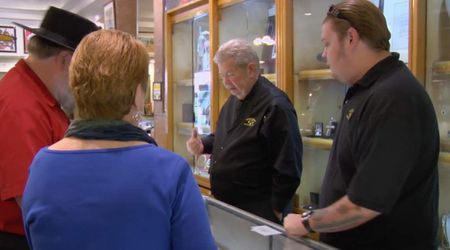Using Emojis Has Led to a Remarkable 30% Increase in Tipping Averages, Study Finds

In today's digital age, emojis have evolved from mere pictorial expressions to powerful communicative tools embedded in various forms of digital interaction. From casual text messages to professional emails, these small icons play a significant role in conveying emotions, reactions, and ideas. However, recent research suggests that emojis might hold an untapped potential in an unexpected domain: service-based business transactions. A study published in the International Journal of Hospitality Management sheds light on how emojis can significantly influence tipping averages, potentially revolutionizing the dynamics of service transactions, per BNN Bloomberg.

Emojis in service transactions: A new frontier
Conducted by researchers, the study delves into the impact of emojis on tipping behavior across different service contexts, including full-service restaurants, food delivery apps, and take-out services. The experiment involved presenting preselected tipping percentages accompanied by varying emojis to gauge their effect on tipping averages.

In full-service restaurants, where patrons typically have the option to tip through credit or debit card terminals, the inclusion of emojis led to a remarkable 30% increase in tipping averages. For instance, a neutral emoji accompanied the 10% tipping option while increasingly happier smiley faces were associated with higher percentages, ranging from 15% to 25%. This resulted in a notable uplift in tipping averages, from 22.86% to 25.38%, indicating a significant impact on customer tipping behavior.
Similarly, food delivery apps witnessed a notable rise in tipping averages, with emojis enhancing the average tipping payments from 14.66% to 16.11%, marking a relative increase of 9.9%. However, the most significant impact was observed in take-out services, where tipping payments surged from 12.61% to 16.75%, highlighting the substantial influence of emojis in this context.
Understanding the psychological mechanism
While tipping decisions have long been studied, factors influencing these decisions have primarily revolved around human-to-human interactions such as server demeanor and verbal communication. However, technological advancements now offer restaurants the ability to manipulate information presented to customers during payment transactions, independent of server initiatives.

Emojis, being primary channels for non-verbal emotion communication, can trigger positive emotions, particularly smiles, which are directly associated with increased tipping behavior. The study suggests that virtual smiles conveyed through emojis elicit similar neurological responses as facial smiles, activating regions of the brain linked to facial perception. This biological reaction could explain the observed increase in tipping averages, underscoring the profound impact of emojis on customer behavior in service transactions. However, the use of emojis should also be context-specific to avoid fiascos like this one occasion when a woman staunchly refused to leave a tip for her waitress, citing offense at a casual term of endearment, "sweetheart" used by the server. When the waitress collected the bill post-meal, she was met with a surprise. Instead of the customary tip, a handwritten note was given, stating, "Don’t call my husband a sweetheart."
Implications for the service industry
As service transactions continue to evolve in an increasingly digital landscape, understanding non-conscious methods for enhancing tipping averages becomes imperative for both academics and practitioners.

Emojis, once perceived as mere embellishments in digital communication, emerge as powerful tools capable of significantly influencing customer behavior in service contexts. By leveraging this understanding, businesses can optimize their payment interfaces to incorporate emojis strategically and thereby, foster positive customer experiences and potentially increase tipping revenues.




















